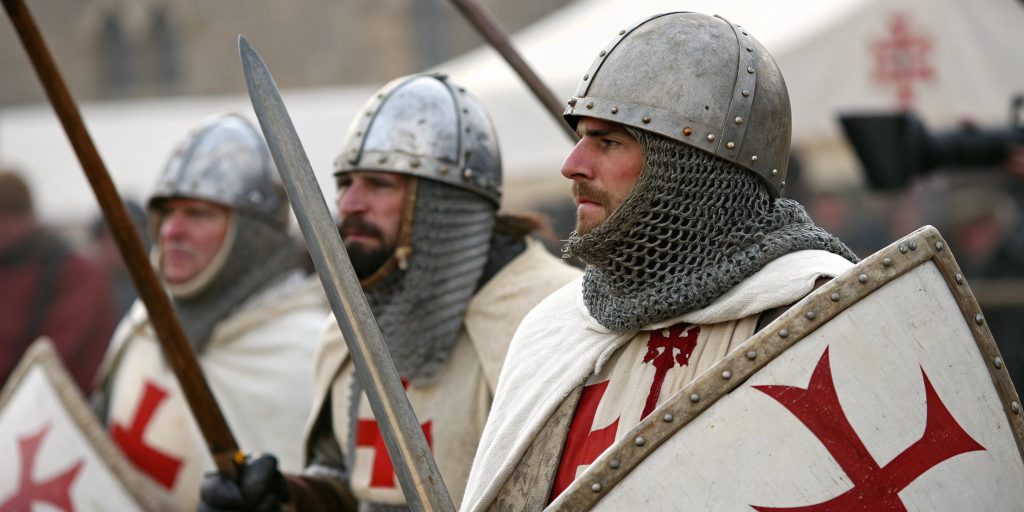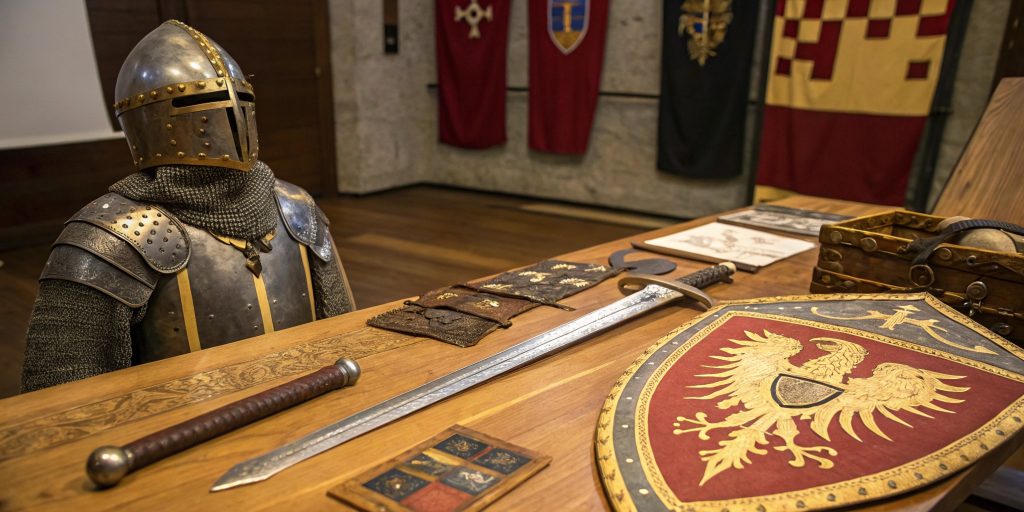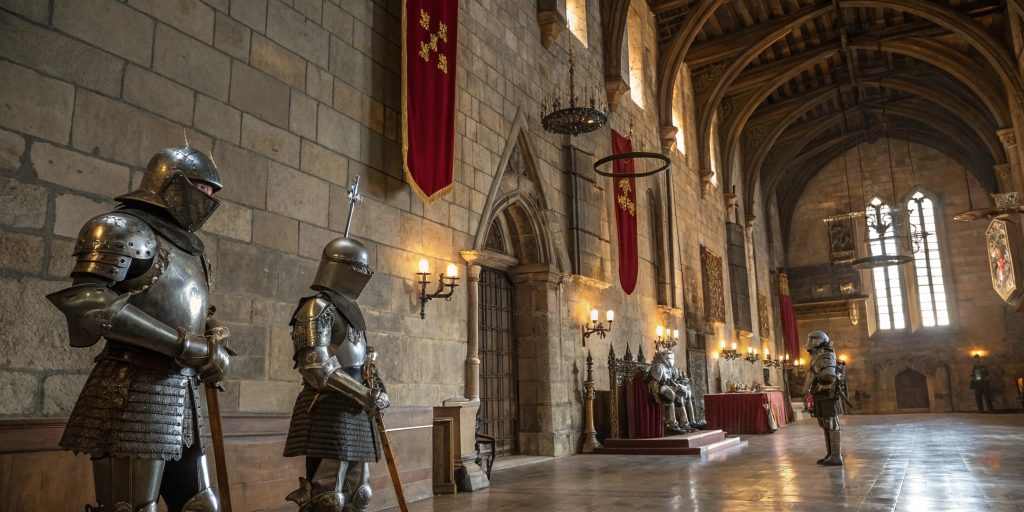Medieval knights were key historical players, serving as top soldiers and protectors in the Middle Ages. This article shares 10 facts about these knights, including their growth and the Knights Templar’s big role. They came from noble families and followed a strict code of honor.
These warriors did more than fight; they upheld the chivalric code that knights would know about. They also served in many ways, not just in battles. For those interested in medieval history, these fun facts about knights in the Middle Ages give a peek into their lives and tasks. We’ll also examine the Knights Templar’s special legacy during the Crusades.
Let’s explore interesting facts about knights together. We’ll uncover the complex world they lived in and their lasting impact.
The Evolution of Medieval Knights
Becoming a knight is a journey filled with history and values. It starts with young boys as squires, getting ready for knighthood. Under experienced knights, they learn combat, horsemanship, and noble duties.
From Squires to Knights
Going from squire to knight is a big step. It shows a young man’s readiness for chivalry during the medieval period. Squires learn martial skills and values like loyalty and honor. They prepare for an oath that shows their commitment to knighthood.
The Role of Papal Authority
Papal authority was key for medieval knights. Many vowed to defend the Church and follow its teachings. This was clear during the Crusades.
The support from popes, like Pope Urban II in 1095, made their missions right during the medieval period. It showed their moral and spiritual duties in war, reflecting the chivalric principles of the time.
10 Facts About Medieval Knights
Chivalry shaped the lives of medieval knights. This code guided their actions and dreams. It taught them to be loyal, brave, and respectful, especially to women and the poor.
Chivalry and the Code of Honor
Chivalry was more than a rule; it was a knight’s identity in medieval times. It taught them to be:
- Brave in battle
- Loyal to their lord and friends
- Courteous to women
- Protective of the weak
This code made knights feel a strong sense of duty. They followed it in battle and everyday life, showing their honor as knights and noble cavalrymen.
Knighthood Ceremony: The Accolade
The knighting ceremony was a big change for young squires. It included important steps:
- The giving of arms shows the squire was ready to be a knight
- The kiss of peace, a promise to honor the chivalric values of knights.
- The dubbing, where a sword tapped the shoulder to make them a knight
These rituals showed the knight’s commitment to chivalry and the values of the medieval period. They marked their readiness to serve and protect in the context of chivalric ideals.
The Templar Warriors and Their Unique Role
The Knights Templar, founded in the early 12th century, became famous for protecting Christian pilgrims going to the Holy Land. Their mantles, which bore a red cross, made them stand out.

They did more than fight; knights also upheld the chivalric code in their actions. These crusader knights fought in many battles. They helped shape the medieval world.
The Establishment of the Knights Templar
The Knights Templar were formed to protect pilgrims, a fact you didn’t know about their origins. They began with nine knights led by Hugh de Payens. The group grew fast, getting support from leaders and the church.
The Templars received the church’s approval, which helped them build a network of forts in the Holy Land. Their growth made them important in the Crusades, as knights of old played a crucial role.
Knights Templar in the Crusades
In the Crusades, the Knights Templar were known for their bravery. They fought in many battles, including the Battle of Hattin in 1187. This battle showed their skill and strategy.
They did more than fight. The Templars also helped with finance and building. They built safe trade routes and forts. This helped their cause.
The Knights Templar left a lasting mark. They changed medieval warfare and society.
Life and Training of a Medieval Knight
Becoming a knight was tough. It started in childhood. Young squires learned the basics for their future as warriors.
Skills and horsemanship were key for the knights of old in medieval times. They were needed for battle.
Skills and Horsemanship
To be good with a knight’s tools, young knights had to learn:
- Swordplay: This was important for fighting one-on-one.
- Archery: Knights could attack from far away with this skill.
- Horsemanship: They learned to ride well for war.
Without these skills, fighting was hard for knights in medieval times, as medieval facts show.
Armour and Weapons: The Knightly Arsenal

Knights had many tools and armor essential for their roles in tournaments. They carried:
- Lances: For charging at enemies on horseback.
- Swords: Needed for close fights, as knights of old would know.
- Shields: These are for protection and to block attacks.
Armor changed a lot over time. Early knights wore chainmail. Later, they used plate armor. This new armor was better at protecting knights in battle, especially during jousts.
Conclusion
The legacy of the medieval knights is deeply woven into history. It shows a mix of bravery, discipline, and loyalty to chivalry. These warriors changed the way wars were fought and shaped society and government.
Knights, especially the famous Templars, left a lasting mark on the medieval world. They influenced military tactics and culture, especially in tournaments and jousts. Their role in the Crusades shows their complex reasons—spiritual, economic, and political- and the interesting facts surrounding medieval life.
Studying medieval knights’ facts teaches us about a key period in history. Their stories inspire books and movies, keeping their legacy alive. Understanding their journey helps us see the importance of honor and bravery today.

